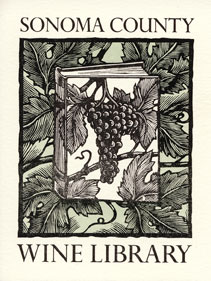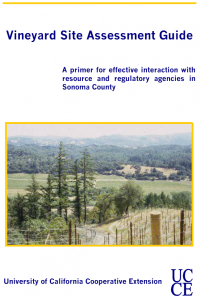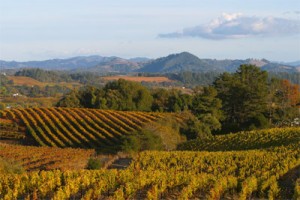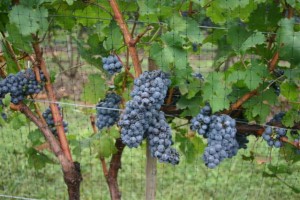 Did you know that the Sonoma County Library has a special service and collection known as the Sonoma County Wine Library? If you ever find yourself in need of an article, bibliographic reference, and/or photograph related to wine, or if you’re simply looking for some piece of wine information, visit the Healdsburg Regional Library at 139 Piper St., on the corner of Piper and Center.
Did you know that the Sonoma County Library has a special service and collection known as the Sonoma County Wine Library? If you ever find yourself in need of an article, bibliographic reference, and/or photograph related to wine, or if you’re simply looking for some piece of wine information, visit the Healdsburg Regional Library at 139 Piper St., on the corner of Piper and Center.
The Wine Library at Healdsburg Regional Library began in 1988 and contains approximately 5,000 books on wine and wine-related subjects, as well as over 80 subscriptions to wine-related periodicals. It also serves as a business and technical library for the Sonoma County Wine Industry, which helps fund it, and acts as a historical archive of wine history, with a special emphasis on Sonoma County.
Wine Files
A side project of the Sonoma County Wine Library is the Wine Files, which can be accessed by clicking here. According to the Sonoma County Library website, the Wine Files project is intended “to make its [Sonoma Library] clipping files of articles on wine, winemaking, grape growing, the wine business, and the history of wine accessible on the World Wide Web. The items in the database include citations, abstracts and links to articles in the technical, academic, trade and consumer wine magazines and journals. There are also citations and summaries for newspaper articles, government documents, press releases, advertising brochures and other ephemera dealing with wine.”
Sonoma County Visionaries, Immigrants and Winemakers
Sonoma County Visionaries, Immigrants and Winemakers is one of the Sonoma County Library’s Heritage Collections’ most interesting historical references projects. It is an online collection of local, historical images that are related to the Sonoma County wine industry, beginning in the 1870s and continuing into the 1990s. The images within this collection give viewers a glimpse at the wine makers and wine-related companies of Sonoma County, from the past and in the present. Click here for more information.
Biblioteca Vinaria Sonoma
Another part of the Sonoma County Library’s Heritage Collections, Biblioteca Vinaria Sonoma includes a wide range of historical texts on all aspects of viticulture and winemaking. In it, you’ll find proclamations of George III on wine regulations as well as old letters describing grape production in local area vineyards. Click here.
Other intriguing and significant aspects of the Sonoma County Wine Library include wine labels, 16mm films, more than 1,000 rare wine books dating back to 1512, and even transcripts of interviews with winemakers, growers, and other notable figures in the Sonoma County wine industry.
One of the main goals of the Wine Library is to attract new patrons to explore the resources available to them. Some of the many events that happen in the library each year to raise money include The Annual Meeting, Appellation Tours, Fireside Chats, and Sonoma Odyssey.
If you’re interested in joining the Wine Library Associates of Sonoma County or would like to learn more about the events mentioned above, call (707) 433-3772, visit www.SonomaOdyssey.org, or write to The Wine Library Associates of Sonoma County at PO Box 43, Healdsburg, CA 95448.




